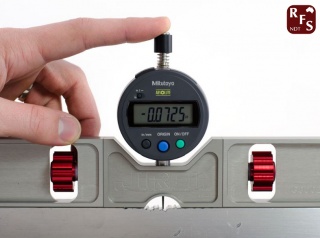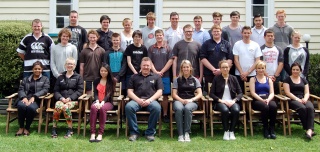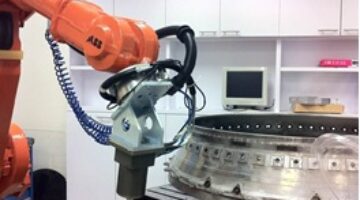
Gauge measures surface variations
This gauge is well-known for its accuracy, ease of use and modular design, making it the go-to tool for manual pit inspections. It has 4 extension arms for maximum flexibility. The Jireh Pit Gauge kit is of high build quality and includes 0″ – 0.5″ digital indicator; 3″ base; Blind […]

SME growth coming off record highs
Growth among New Zealand’s small businesses has levelled off in the last six months with the economy entering a more stable phase, according to a nationwide survey of small business operators. Thirty-two per cent of SMEs saw revenue increase in the 12 months to February – down from a five-year […]

Kiwi WorldSkills team gets set for the trade equivalent of the Olympics
Twenty-six young Kiwi are preparing to compete against the best of the best competitors from Canada, India, Malaysia, China, Australia and Korea in the inaugural WorldSkills Oceania regional competitions to be held April 13-17 at Wintec in Hamilton. So far, 105 international competitors are registered to compete in a total […]
Companies need more scale to tap into India’s fast-growing economy
Indian billionaire Nandan Nilekani says scale is a problem New Zealand companies need to overcome to crack the growing Indian market. Nilekani has been twice named by Time magazine as one of the world’s 100 most influential people and is the former chairman of the Unique Identification Authority of India […]

Continued expansion
The services sector continued to show healthy expansion for February, according to the BNZ – BusinessNZ Performance of Services Index (PSI). The PSI for February was 55.6. Although this was 2.2 points lower than January, it represents ongoing growth in the sector (A PSI reading above 50.0 indicates that the […]
IPENZ awards for two academics
Two University of Waikato academics picked up awards at The Institution of Professional Engineers New Zealand (IPENZ) Fellows and Achievers Dinner on Friday, March 13. Engineering Professor Janis Swan won the Skellerup Award for Chemical Bioprocess and Food for her distinguished contribution to the food, biopress and chemical engineering in […]

Back in the game
The manufacturing sector experienced improved levels of expansion during February, according to the latest BNZ – BusinessNZ Performance of Manufacturing Index (PMI). The seasonally adjusted PMI for February was 55.9 (a PMI reading above 50.0 indicates that manufacturing is generally expanding; below 50.0 that it is declining). This was 5.2 […]

Do stakeholders really care about corporate social responsibility?
A public lecture in Wellington by a visiting Professor of Marketing will focus on corporate social responsibility (CSR) and whether it matters to stakeholders. There is worldwide consensus that a company’s commitment to maximising long-term societal and environmental well-being through its business practices is a strategic imperative, says Professor Sankar […]
Uptake of energy efficient products saves New Zealand millions
Uptake of energy efficient products saves New Zealand consumers and business more than $96 million in a one-year period, according to analysis of the Energy Efficiency and Conservation Authority’s (EECA) Products Programme. EECA’s Energy Efficient Products Manager Eddie Thompson says EECA calculated the energy savings for the year ending March […]
CERA bullish on Chch CBD projects
Acting chief executive John Ombler told parliament’s finance and expenditure committee the CBD projects are worth an estimated $1.1 billion, and more projects are being announced to rebuild the heart of Christchurch. CERA’s initial focus was on ensuring residential properties were rebuilt and repaired, and in recent years it’s put greater […]
NZ manufacturing activity grows 0.9% in December
The volume of total manufacturing rose a seasonally adjusted 0.9 percent in the three months ended Dec. 31, its second quarter of expansion, and up 1.5 percent from the same period a year earlier, according to Statistics New Zealand. That activity was underpinned by a 7.2 percent increase in petroleum […]
Good start to 2015
The latest New Zealand Manufacturers and Exporters Association (NZMEA) Survey of Business Conditions completed during February 2015, shows total sales in January 2015 increased 10.29% (year on year export sales increased by 11.61% with domestic sales increasing 6.52%) on January 2014. The NZMEA survey sample this month covered NZ$502m in annualised […]

As New Zealand CBDs evolve post-pandemic, repurposing old or empty spaces should be on the drawing board
Jose Antonio Lara-Hernandez, Senior Researcher in Architecture, Auckland University of Technology The COVID-19 pandemic and the hybrid work patterns hybrid work patterns it fostered have changed the way we think about office space, and central business districts in general. While fears of urban centre “ghost towns” may have been premature, many cities around the world still face dilemmas over how best to adapt. New Zealand is feeling this pressure too. Office vacancy rates, while dropping slightly, have remained above 12%. At the same time, there is demand for high-quality, modern spaces that fit new work and collaboration models. This isn’t an entirely new phenomenon. Throughout history, cities and buildings have been designed with specific functions in mind. As environmental and social needs change, however, these designs struggle to meet contemporary demands. So, what can be done with the empty buildings and unleased floors scattered through cities everywhere? In our new book, Architectural Exaptation: When Function Follows Form, we examine the process by which existing structures or features are re-imagined and re-utilised. In architecture, the concept of “exaptation” refers to this adapting of buildings and structures for new uses. It is becoming increasingly relevant as a transformative response to sustainable and resilient urban development. Buildings on Venice’s Grand Canal: more than a static relic of the past. Getty Images The benefits of adapting Exaptation in architecture requires us to view built environments not just as physical spaces, but as complex living systems that can adapt and transform. Reusing and repurposing existing structures also helps reduce waste, CO₂ emissions and energy use, supporting more sustainable urban growth. At the same time, by reusing rather than rebuilding, the historical and cultural fabric of cities is preserved, as well as their inhabitants’ sense of identity. A famous example is Venice, which has continuously adapted its historic structures to meet modern needs, […]










